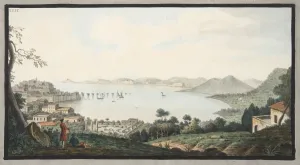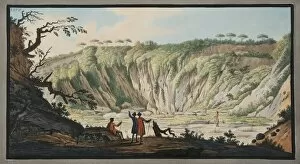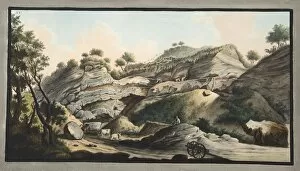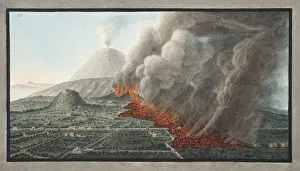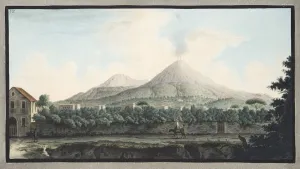Pietro Fabris Collection (#3)
Pietro Fabris is an Italian artist and sculptor who has been creating art for over 25 years
131 Items
All Professionally Made to Order for Quick Shipping
-
Pietro Fabris Collection
Pietro Fabris is an Italian artist and sculptor who has been creating art for over 25 years. He specializes in creating unique sculptures from a variety of materials, including marble, bronze, wood, and stone. His works are inspired by nature and the human form. He has exhibited his work in galleries throughout Italy as well as internationally. His sculptures have been featured in numerous publications such as Vogue Italia and Art & Design Magazine. Pietro's work is highly sought after by collectors around the world due to its unique style and craftsmanship. Pietro believes that art should be accessible to everyone, so he strives to make his pieces affordable while still maintaining their quality and beauty.
+
Our beautiful Wall Art and Photo Gifts include Framed Prints, Photo Prints, Poster Prints, Canvas Prints, Jigsaw Puzzles, Metal Prints and so much more
The Pietro Fabris collection, available on Media Storehouse, is a stunning selection of wall art, framed prints, photo prints, canvas prints, jigsaw puzzles and greeting cards. Our collection features the works of Italian artist Pietro Fabris who was known for his intricate and detailed illustrations of architecture and landscapes. His work captures the beauty and grandeur of historic buildings such as cathedrals and palaces in Italy. Our collection offers a range of sizes to suit any space or budget with options for framing or printing on high-quality paper or canvas. Each piece is carefully crafted to showcase the intricate details that make Fabris' work so unique. Whether you are looking to add some sophistication to your home decor or searching for a thoughtful gift for an art lover, the Pietro Fabris collection has something special to offer. With its timeless appeal and exquisite attention to detail, our collection is sure to impress anyone who appreciates fine art.
+
What are Pietro Fabris (Artists Arts) art prints?
Pietro Fabris was an Italian artist who lived in the 18th century. His art prints depict various landscapes, buildings and monuments from Italy and other European countries. These prints are highly detailed and accurate representations of the places they portray, capturing their unique beauty and character. Fabris' art prints are known for their use of light and shadow to create depth and dimensionality. They also feature intricate architectural details that showcase his skill as a draftsman. We offer a wide selection of Pietro Fabris' art prints, which can be purchased in various sizes to suit any space or decor style. Whether you're looking for a stunning piece to hang in your living room or office, or simply want to add some classic Italian charm to your home, these beautiful prints are sure to impress.
+
What Pietro Fabris (Artists Arts) art prints can I buy from Media Storehouse?
We offer a wide range of art prints by Pietro Fabris through its online platform. You can choose from a variety of his artworks, including landscapes, cityscapes, and portraits. His paintings are known for their vibrant colors and intricate details that capture the essence of the subject matter. Some popular prints available on Media Storehouse include "The Grand Canal in Venice," "View of Rome with St. Peter's Basilica," and "Portrait of a Lady." These pieces showcase Fabris' talent for capturing both natural beauty and human emotion. Whether you're looking to decorate your home or office space, or simply add to your personal art collection, there is sure to be a Pietro Fabris print that suits your taste. With our easy-to-use website, you can browse through hundreds of options and find the perfect piece to suit your style.
+
How do I buy Pietro Fabris (Artists Arts) art prints?
To purchase Pietro Fabris art prints from Media Storehouse, you can browse our collection of prints featuring the artist's work. Once you have found a print that you would like to purchase, simply add it to your cart and proceed to checkout. During the checkout process, you will be prompted to enter your payment information and shipping address. We offer a variety of sizes and framing options for their prints, so be sure to select the option that best suits your needs. Additionally, we offer a range of paper types including matte, glossy or lustre finishes. Once your order has been placed and processed by Media Storehouse, they will ship your print directly to your chosen address. It is important to note that all purchases are final sale and cannot be returned or exchanged unless there is an issue with the quality of the product upon arrival.
+
How much do Pietro Fabris (Artists Arts) art prints cost?
We offer a wide range of Pietro Fabris art prints at varying prices. Our collection includes high-quality reproductions of his most famous works, including landscapes and portraits. The cost of each print will depend on several factors such as the size, type of paper used, and the complexity of the artwork. We take pride in providing our customers with affordable options without compromising on quality. Whether you're looking for a small print to add to your home decor or a larger piece to display in your office or business space, we have something for everyone. Our Pietro Fabris art prints are perfect for anyone who appreciates fine art and wants to bring some beauty into their lives. With our extensive collection and competitive pricing, there's no reason not to invest in one today.
+
How will my Pietro Fabris (Artists Arts) art prints be delivered to me?
We take great care in ensuring that your Pietro Fabris art prints are delivered to you safely and securely. We use high-quality packaging materials to protect your artwork during transit, including sturdy cardboard tubes or flat packages depending on the size of the print. All our art prints are carefully rolled and wrapped in acid-free tissue paper before being placed inside a protective tube or package. This ensures that your print arrives in pristine condition without any damage or creases. We work with trusted delivery partners who offer reliable and efficient shipping services worldwide. Once your order has been dispatched, you will receive a tracking number so you can keep an eye on its progress until it reaches your doorstep. Whether you're ordering one print or several, rest assured that we'll do everything we can to ensure they arrive at their destination in perfect condition.








